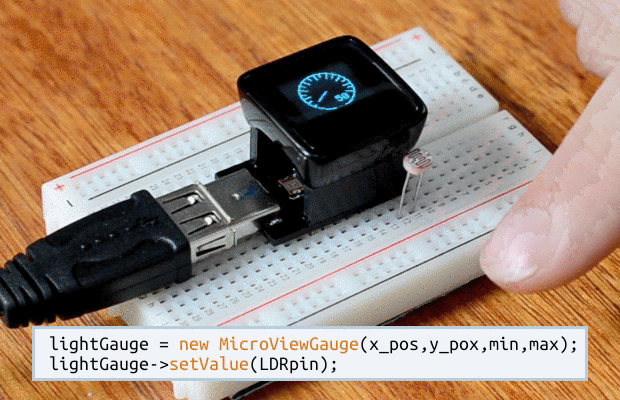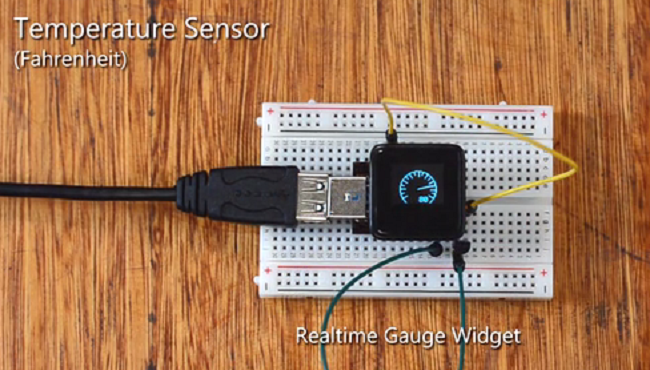
Arduino boards have grown so popular, that the very name “Arduino” is almost synonymous with development boards. The flexibility and economics presented by their wide range of products make them a favorite of many folks; but best of all, their open source nature allows anyone to capitalize on designs build off the Arduino. Pretty damn good huh? The only minor detail that can make an Arduino even better is a built-in OLED display, and thanks to creative minds from Geek Ammo, we’ve gotten just that. Introducing the MicroView, a Kickstarter sensation in the form of a chip-sized Arduino with a build-in OLED.
This first of its kind dev board has already completed its funding goal of $25,000 within a few days, and is sitting at 823% or $204,694 as this story is being written. MicroView’s popularity stems from the simple fact that the display module lets everyone see what’s happening inside the Arduino independent of a computer connection. Additionally, the board comes with a library of customizable display images and texts to add a new level of interactivity to your projects.

Interactive projects
For example, if you’re building a light sensor project on a breadboard, then MicroView will not only display the immediate values as you interact with the Arduino, but will actually tell you where to place each components, adding the possibility of teaching electronics to an utter novice.

Part of the fun of electronics building comes from the interactive feedback of watching code come to life in the hardware via spinning motor or blinking LED, but MicroView enhances this function through its display. Now writing “uView.rect(x_pos, y_pos, width, height);” will actually draw out a rectangle in real-time.

Nevertheless, MicroView is not a glorified OLED peripheral, but an actual Arduino condensed into the size of coin. And as result, tons of other interesting, independent projects can be built with it: robots, wearable computing projects, weather readers, mini Oscilloscope, gas sensors, games, CPU status readers, e-mail counters, sports results, heart sensors, and more.
Flexible Power
MicroView may be powered with a coin cell battery, AA or AAA batteries, USB power, 9V Square batteries or a 12V car battery. 6-16VDC is recommended for maintaining stable 5v 16 MHz operations.
GENERAL SPECS
• Support for the Arduino™ IDE 1.0+ (OSX/Win/Linux)
• 100% Arduino™ Compatible
• Built-in 64×48 OLED display
• Direct 3.3VDC – 16VDC power input, no power regulator needed
• Standard DIP Package
• Breadboard friendly or direct solder
HARDWARE SPECS
• Display: 64×48 OLED Display
• Microcontroller: ATmega328P
• Operating Voltage: 5V
• Input Voltage: 3.3VDC – 16VDC
• Digital I/O Pins: 12 (of which 3 provide PWM output)
• Analog Input Pins: 6
• Flash Memory: 32 KB
• SRAM: 2 KB
• EEPROM: 1 Kilobyte
• Clock Speed: 16 Mhz
• No other components required
Visit MicroView’s Kickstarter page to acquire your own
Advertisement
Learn more about Electronic Products Magazine






